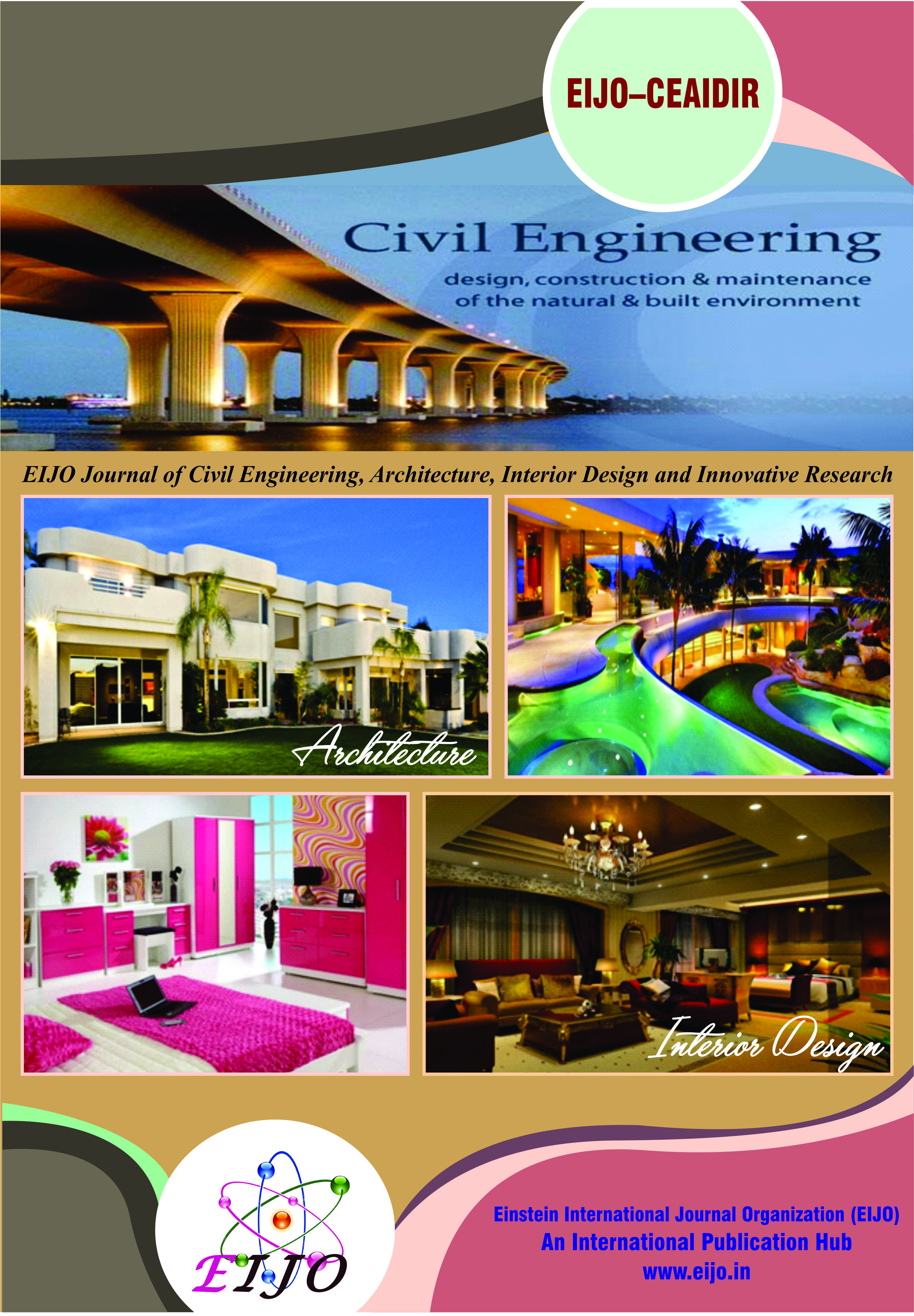JOURNALS || EIJO Journal of Civil Engineering, Architecture, Interior Design and Innovative Research (EIJO–CEAIDIR) [ISSN: 2456 - 1819]
A living testament to the treatment of the Mediterranean region from ancient times are the historical fossils of the Roman aqueduct. Hippocrates, the founder of Greek medicine, is said to have related good water quality to health a few centuries earlier with the development of the first water filtration device, a fabric made of cloth (Sklivaniotis and Angelakis, 2006). Today, water in the Mediterranean region appears to be at the center of development problems. Water is considered a similar problem in an area where distinct borders intersect - politically, socially, culturally and economically. This has facilitated the development of advanced technical skills, but in order to counter the general future of diminishing water supply, they are not always accompanied by the right consumer practices. The area can be characterized by various climatic conditions, each influenced by rainfall variability. In comparison to the arid regions in Spain and on the eastern and southern coasts of the Mediterranean Sea, there are waterfalls in Northern Italy, southern France, the coast of the Balkans and selected areas in Turkey. The strain on water supplies in the Mediterranean region is rising in terms of geomorphology, climate and population density. The water level and the scale of the Mediterranean area should be treated equally. An aqueduct system is initially constructed manually based on certain input parameters. The hydraulic properties and strengthening measurements of the aqueduct system are measured in this manual design. The unsustainable use of groundwater, which is the key source of water for domestic and agricultural purposes in the area, has led to the depletion of water tables, the removal of wetlands and the infiltration of coastal marine waters. The reinforcement measurement on the wall, beam as well as on software is measured manually. In both cases, the necessary reinforcement is identical. Often, it defines the trough wall and slab thickness. The displacement without a tie beam in the aqueduct is almost 7 times the tie beam subjected to static load. Compared to Static Load, deflection and stresses in the system due to dynamic forces are more pronounced. Owing to hydrodynamic forces, deflection and stresses applied to the joints are roughly 2.4 times and 3.8 times greater due to hydrostatic loads, respectively. The deflections in the center are very wide and the stresses at the end of the structure are strong.
Keywords: Area, Politically, Socially, Culturally And Economically.
- Yanjun Li, He Wang, Di Wu. Vibration Characteristics Analysis and Study of Large Aqueduct Structure[J]. Yangtze River, 2009(5): 50-51.
- GB 50010-2010: Design Code for Concrete Structures(China Architecture and Building Press, China 2010)(in Chinese).
- X.CH. Wang: Finite Element Method (Tsinghua University Press, China 2003)(in Chinese)
- BoFang Zhu: Finite Element Method Principle and Application(China Water Conservancy and Hydropower Press, China 1998)(in Chinese).
- S. Benjamin Valdez,W. Michael Schorr,G. Navor Rosas et al. Corrosion Control in the Rio Colorado-Tijuana Aqueduct [J]. Corrosion reviews,2005,23(4/5/6):247-276.
- YuchunLi,MenglinLou,Danguan Pan et al. Evaluation of vertical seismic response for a large-scale beam-supported aqueduct [J]. Earthquake Engineering and Structural Dynamics, 2003,32(1):1-14.



